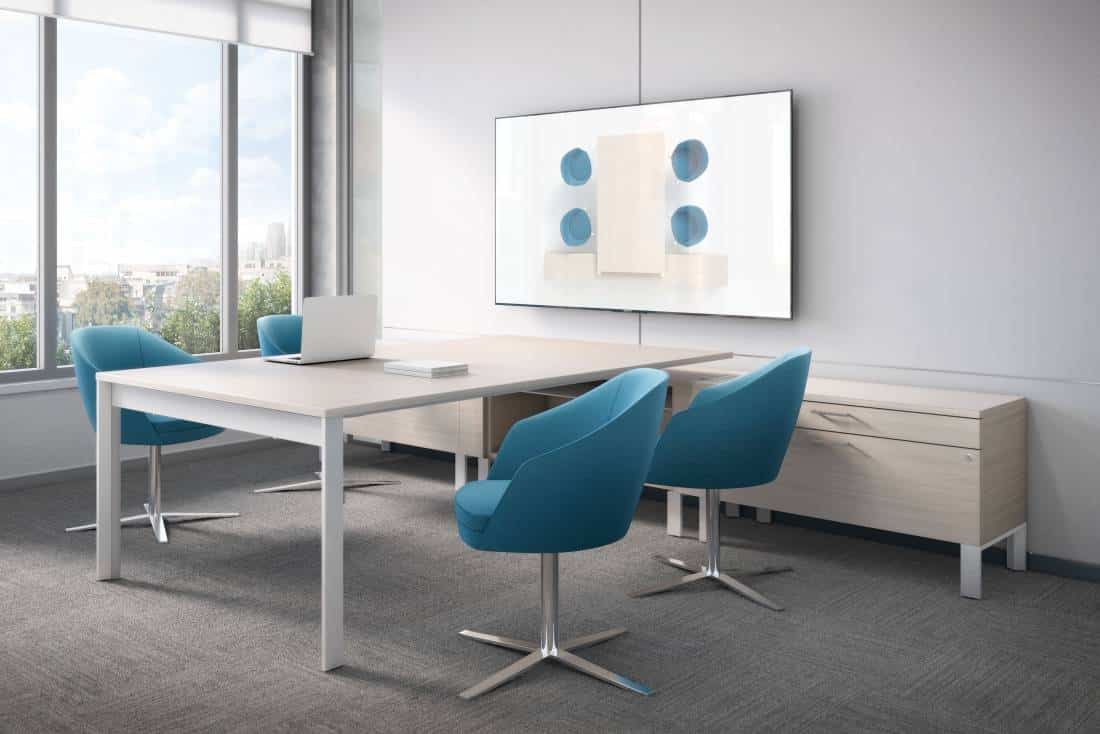
Design a Conference Room: A Comprehensive Guide
Author: Elijah Walters
When it comes to space planning a conference room, the goal is to create an environment that fosters creativity, productivity, and promotes collaboration within your organization and customers. Whether you are designing your conference room for client meetings, brainstorming sessions, or executive board meetings, the right set up can make all the difference. Here is our step by step guide on how to create the ideal conference room space.
Step 1: Determine the Purpose of the Room
Before diving into the specifics of the furniture you would like to put in your space, consider the primary use of the conference room. Will it be used for hosting large group meetings, video conferences, training sessions, or intimate client meetings? Understanding the primary function of the space will help guide your decisions on what furniture and equipment you will need in the space.
Step 2: Select the Right Table
The conference table will be the centerpiece of your conference room, start here and configure around it.
Identify the correct size table for your space, by measuring out your conference rooms interior dimensions. To maintain ADA compliance you will need a minimum of 36 inch walk ways around all sides of your table however we recommend 42 – 48 inches as it will prevent the space from feeling to crammed and allow easier mobility and access around the seating. In addition 30 inches of space per seat around the conference table should be used to ensure participants have enough room to sit and move comfortably. Contact Us for our free space planning guide.
Identify the style of table for your space. When it comes to style there are 4 common conference table shapes: racetrack/oval, rectangular, boat shape, or round. Each table shape typically has a number of base options such as cube base, panel base, or metal leg base. Get Inspiration
Step 3: Select the Right Seating
Selecting comfortable seating is crucial for maintaining focus and engagement during long meetings. Historically leather style chairs with minimal adjustments have been used and are still a great option for the conference room, however, think about trying out some ergonomic mesh-back style task chairs as they can provide more adjustability and support for end users if you have regular meetings or trainings that run longer. Browse Conference Chairs | Browse Task Chairs
Step 4: Select Ancillary Items
Every company uses their conference rooms differently so the ancillary items you want to consider will be in direct relation with how your space is most commonly used. The core items we recommend adding to your conference room are: a smart TV for presentations, market boards (either wall mounted or mobile) for brainstorming, storage credenzas for refreshments, mini fridge for beverages, and power modules for charging laptops (can be inlaid into conference table for easy access). If you do lots of video conferencing make sure you have a good webcam, audio equipment, and connectivity solutions (HDMI, USB, etc.).
Step 5: Design for Comfort & Style
Once you have all the furniture and equipment picked out for the functionality of the space it is time to consider the design of the space to make sure it is aesthetically pleasing to both your staff and guests! Choose colors, artwork, and accessories that compliment your companies brand and culture. Make sure the space is well lit, if you have windows allow the natural light to shine in. If there is limited access to natural light we recommend installing lighting with a temperature between 5000 Kelvin to 6500 Kelvin which are artificial light temperatures closest to natural light. Having dimmable lights to adjust brightness as needed is always a bonus. A good balance between natural light and artificial light is a great way to give your conference room the perfect light intensity, as well will impact the way appearance of the selected finishes throughout the space.
Setting up a conference room involves careful planning more than just putting a table and chair into a space. By considering the main purpose of the room, choosing the right furniture, and incorporating the essential technology, and optimizing comfort and style throughout the decor of the space you can create a conference room the enhances productivity and collaboration. A well-designed conference room is an investment into your company’s success.
